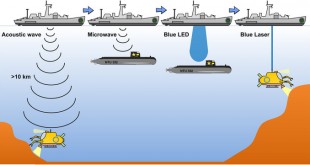Introduction
In the rapidly evolving landscape of display technology, inorganic quantum dot (QD) nanoparticles have emerged as a groundbreaking innovation. These nanoparticles exhibit uniquely tunable optoelectronic properties, opening up exciting possibilities for the development of advanced light-emitting diodes (QD-LEDs). QD-LEDs have found applications in an array of devices, from computer monitors to military equipment, significantly improving visual display capabilities. Imagine computer monitors that display more vibrant, high-resolution images while operating with increased efficiency, all within flexible, bendable configurations.
The Promise of QD-LED Technology
QD-LEDs represent a significant leap forward in visual display technology. These displays are composed of two-dimensional periodic pixel arrays that deliver rapid response rates, ensuring smooth and responsive visuals. What makes QD-LEDs particularly appealing is their ability to create full-color pixels, each consisting of distinct QDs. These QDs assemble into red, green, and blue (RGB) sub-pixels, resulting in displays with vibrant and high-resolution images. However, despite their immense potential, the full realization of QD-LEDs demands novel fabrication approaches.
Existing Challenges in QD-LED Fabrication
While QD-LEDs offer a glimpse of the future, they are not without their challenges. Traditional fabrication methods such as spin-casting face difficulties in precisely patterning microscale multicolor pixels. These methods can lead to cross-contamination between distinct light-emitting QDs, compromising display quality. Top-down photolithography, although effective in some cases, can leave behind processing residue, hindering charge transfer. Emerging techniques like inkjet printing, while promising, are yet to outperform LCD and OLED technologies, and they can be costly. This leaves the door open for innovative approaches to address these limitations.
The Potential of Synthetic Biology
One avenue that holds promise in overcoming the challenges of QD-LED fabrication is synthetic biology. This field enables precise control over the engineering of peptides and microbes, opening up new possibilities for assembling QDs into high-resolution patterns with tunable electronic and photonic properties.
By orchestrating their interactions with QDs, we have the potential to achieve bottom-up assembly of high-resolution patterns with customizable electronic and photonic properties. In the past, DNA and protein biopolymers have been instrumental in assembling inorganic nanomaterials into functional electronic components. DNA scaffolds, for example, have been key in facilitating the self-assembly and patterning of various nanomaterials.
Conductive biomolecules, such as mesoscale silk fibroin networks, show promise in organizing inorganic nanoparticles into periodic arrays and enhancing electronic conductivity through optoelectronic material networks.
DARPA’s Biologically Driven High-Resolution Assembly of Flexible LightEmitting Display
The primary objective of this research is to demonstrate the feasibility of utilizing customizable biopolymers to fabricate novel, flexible QD-LEDs. These displays should exhibit full RGB colors with specific emission wavelengths (red: 630 nm, green: 530 nm, blue: 450 nm).
Biological molecules like silk fibroin networks may have the potential to organize inorganic nanoparticles into periodic two-dimensional arrays and enhance electronic conductivity through optoelectronic material networks. This research aims to explore the feasibility of using customizable biopolymers to fabricate flexible QD-LEDs that produce the full RGB color spectrum. The goal is to create the necessary biological tools for patterning externally synthesized inorganic QDs into pixel arrays, turning them into electroluminescent light-emitting displays.
Peptides, DNA scaffolds, and other biological tools will be utilized to arrange QDs into microscale pixels, each containing RGB sub-pixels, with the choice of QDs left to the performers. The research aims to develop the biological tools necessary for patterning externally synthesized inorganic QDs into pixel arrays, creating electroluminescent light-emitting displays.
Methodology and Expected Outcomes
This project aims to explore the feasibility of using biopolymers, such as peptides and DNA scaffolds, to create innovative and flexible Quantum Dot Light-Emitting Diodes (QD-LEDs) capable of displaying full RGB colors. The goal is to develop biological tools that can arrange inorganic Quantum Dots (QDs) into microscale pixel arrays for use in electroluminescent displays. Researchers will utilize synthetic biology techniques to optimize the arrangement of QDs and contrast this bio-driven approach with traditional nanofabrication methods.
The display will follow a conventional stacked film configuration, including electrodes, electron and hole charge carrier transport layers, the luminescent QD layer, and an external protective coating. The materials and assembly methods used will be those that deliver the desired final prototype functionality.
The research will leverage the power of synthetic biology to assemble QDs into pixel arrays, demonstrating high pixel resolution (> 3000 pixels per inch). The resulting QD-LEDs will operate with an external quantum efficiency (EQE) exceeding 25%, maintaining luminosity over extended periods in ambient environments.
This biologically assembled light-emitting display will be designed for durability in various environmental conditions and repeated flexibility for foldable or curved applications. Importantly, these displays will offer flexibility and bendability, accommodating foldable or curved configurations. Through synthetic biology, this research seeks to push the boundaries of QD-LED technology and drive innovation in visual displays.
Conclusion
In conclusion, the potential impact of biologically-assembled QD-LEDs is an exciting frontier in display technology. The ability to create high-resolution, vibrant, and flexible displays using synthetic biology tools opens doors to new possibilities in various industries. As we move forward, the fusion of nanotechnology and biology is poised to reshape how we perceive and interact with visual information, offering endless opportunities for innovation. The future of QD-LEDs and visual technology looks promising, with synthetic biology playing a pivotal role in unlocking their full potential.
 International Defense Security & Technology Your trusted Source for News, Research and Analysis
International Defense Security & Technology Your trusted Source for News, Research and Analysis
